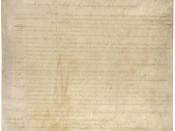Pornography on the Internet. It takes many forms and means different things to different Internet users: an annoyance to a user researching a topic unrelated to anything sexual who ends up at a porn site, a possible embarrassment to the same user who is using a computer in the sight line of others, a source of concern for parents of young users, a source of entertainment for the young and curious. Harmless? No, because one must also take into account the pedophiles who prey on the young and curious, and also the vile and sometimes disturbingly young 'content' to be found in the pornographic sites. These sites are raking in big bucks which leaves one to be concerned about the number of perverts out there who for the most part do not only dwell in cyberpsace, but the real world as well.
A Time Magazine article from 1995 cited a study that, at its conclusion, deduced that there were 917,410 sexually-explicit pictures, descriptions, short stories and film clips on the Internet.
Also cited from the same article is the disturbing statistic which says 98.9 per cent of online pornographic subscribers are male. Obviously, these online sites are popular and make money, but do they belong in our home or our office, uninvited? Most online users would think not.
Often, many users find that when they search the web, at least one "sketchy" site is listed in the choices provided by the search engine. It is as if these "porno" sites have infiltrated every key word search so that may find unsuspecting viewers who will perhaps be intrigued and "bite". But what about young, impressionable viewers who certainly should not be exposed to this filth? Some people think that cannot happen because you must pay to receive the porn, and because children do not have credit cards, they cannot download smut. This is an erroneous assumption because most, if not all, sexually-explicit sites provided a "free sample" of material which was quite explicit and generous in content. Furthermore, often the sites only required an age verification; so any clever kid who can click on the "yes" button when asked if they are 18 years of age can gain access to even more porn. This is an issue which is further researched by Andrea Collard (essay to follow), as she offers valuable information on what options parents have to protect their children from exposure to these disturbing images and texts.
Also of concern is that a child may inadvertently come across porn on the 'Net when not actively seeking it out, and some of it may be quite disturbing. For example, while perusing the links on the John December site, this writer found herself in a pornographic site; this happened quite by accident while following a link to a site titled (?) "World's Most Useless Web Pages", which when clicked upon, offered up a sex site. This goes to illustrate the embarrassment quality mentioned above as this occurred in the middle of a packed computer lab! There has been some legislation passed recently in the United States attempting to stop the access to pornographic sites by children. However, the scope of this legislation is limited and, as always, there are dissenters who oppose censorship on the Web. In the previously mentioned Time article, this issue is said to be rooted in the debate of whether the Internet is a print medium, and thus fairly free of government interference, or whether it is a broadcast medium which should have goverment regulation. To boot, there are also those who state the legislation deprives Americans of their first amendment rights, but the way the Internet is run now with sex sites running amok, popping up when you least expect or want them, a few other personal rights have been violated as well.
The debate continues ... to porn, or not to porn? When it comes to the safety and education of our children, is there really any question?




